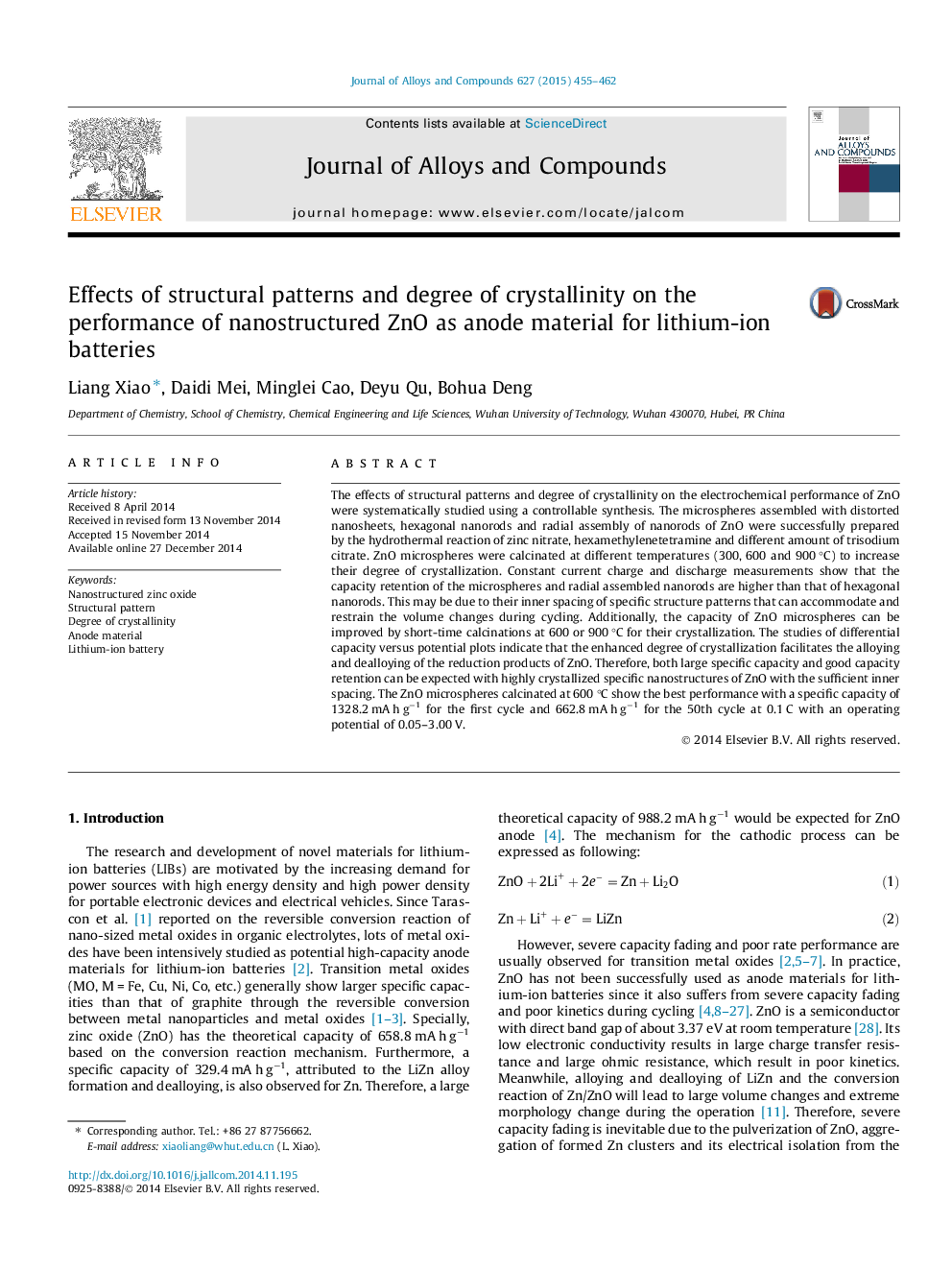| Article ID | Journal | Published Year | Pages | File Type |
|---|---|---|---|---|
| 1610035 | Journal of Alloys and Compounds | 2015 | 8 Pages |
Abstract
The effects of structural patterns and degree of crystallinity on the electrochemical performance of ZnO were systematically studied using a controllable synthesis. The microspheres assembled with distorted nanosheets, hexagonal nanorods and radial assembly of nanorods of ZnO were successfully prepared by the hydrothermal reaction of zinc nitrate, hexamethylenetetramine and different amount of trisodium citrate. ZnO microspheres were calcinated at different temperatures (300, 600 and 900 °C) to increase their degree of crystallization. Constant current charge and discharge measurements show that the capacity retention of the microspheres and radial assembled nanorods are higher than that of hexagonal nanorods. This may be due to their inner spacing of specific structure patterns that can accommodate and restrain the volume changes during cycling. Additionally, the capacity of ZnO microspheres can be improved by short-time calcinations at 600 or 900 °C for their crystallization. The studies of differential capacity versus potential plots indicate that the enhanced degree of crystallization facilitates the alloying and dealloying of the reduction products of ZnO. Therefore, both large specific capacity and good capacity retention can be expected with highly crystallized specific nanostructures of ZnO with the sufficient inner spacing. The ZnO microspheres calcinated at 600 °C show the best performance with a specific capacity of 1328.2 mA h gâ1 for the first cycle and 662.8 mA h gâ1 for the 50th cycle at 0.1 C with an operating potential of 0.05-3.00 V.
Keywords
Related Topics
Physical Sciences and Engineering
Materials Science
Metals and Alloys
Authors
Liang Xiao, Daidi Mei, Minglei Cao, Deyu Qu, Bohua Deng,
